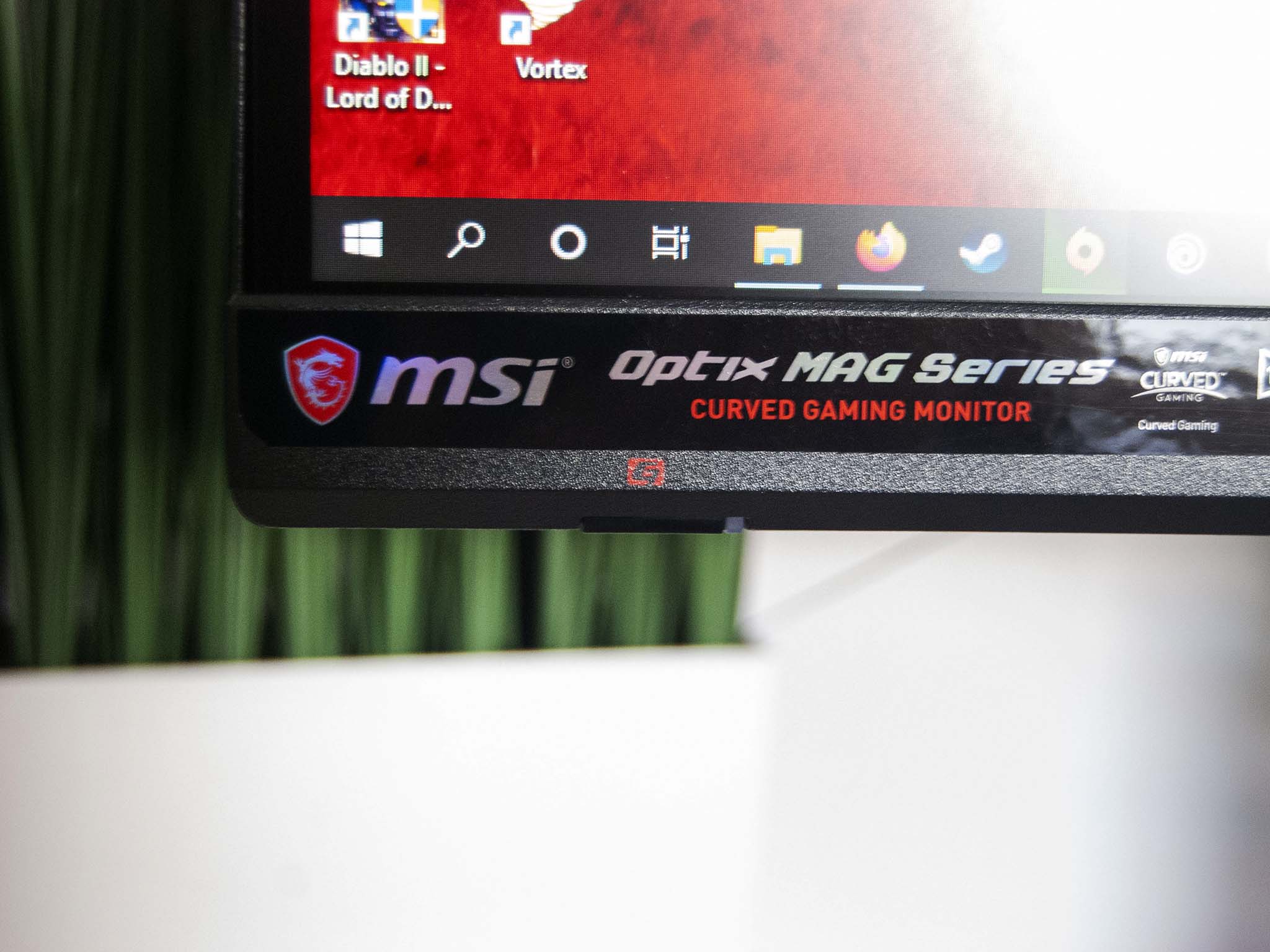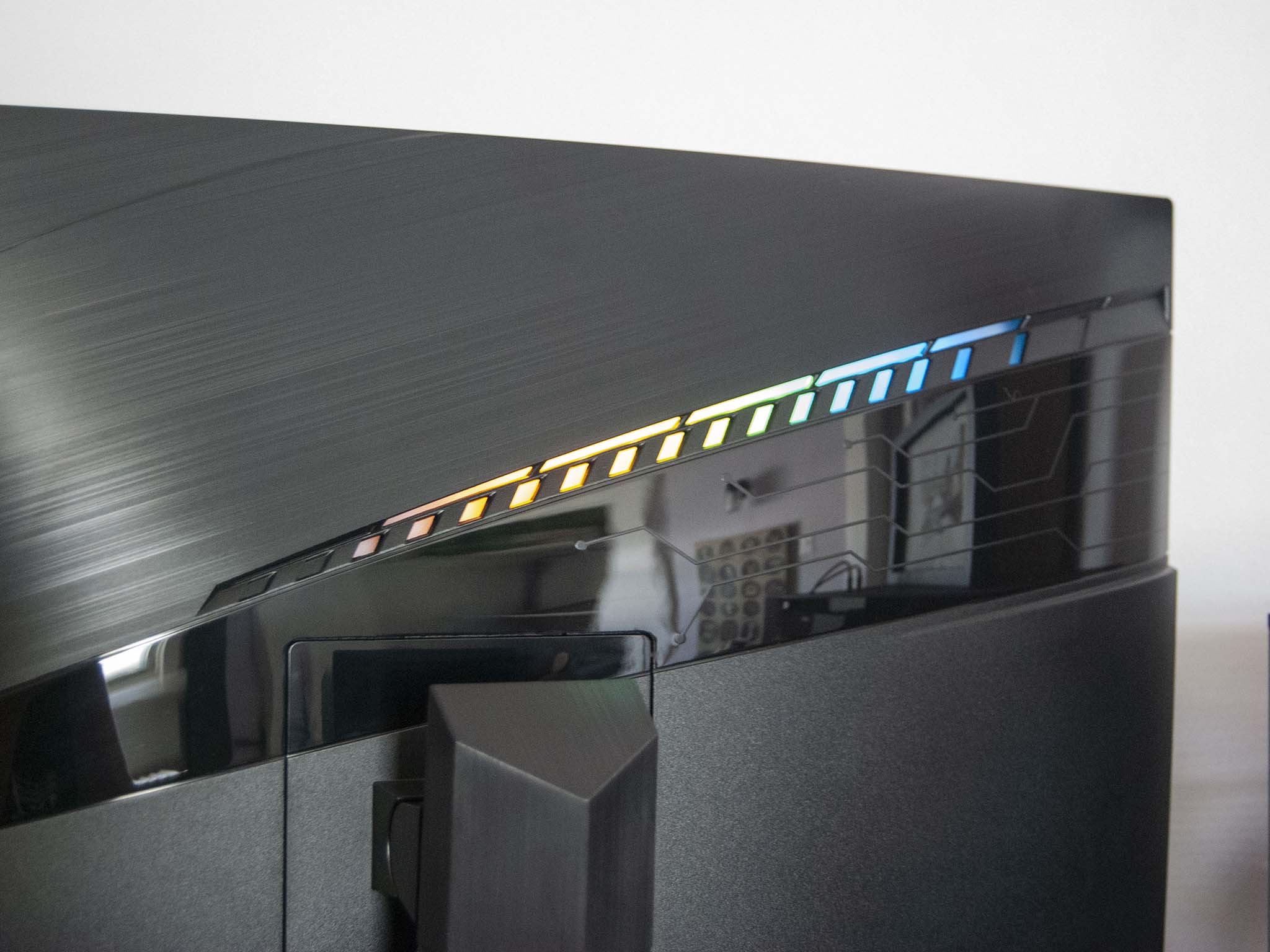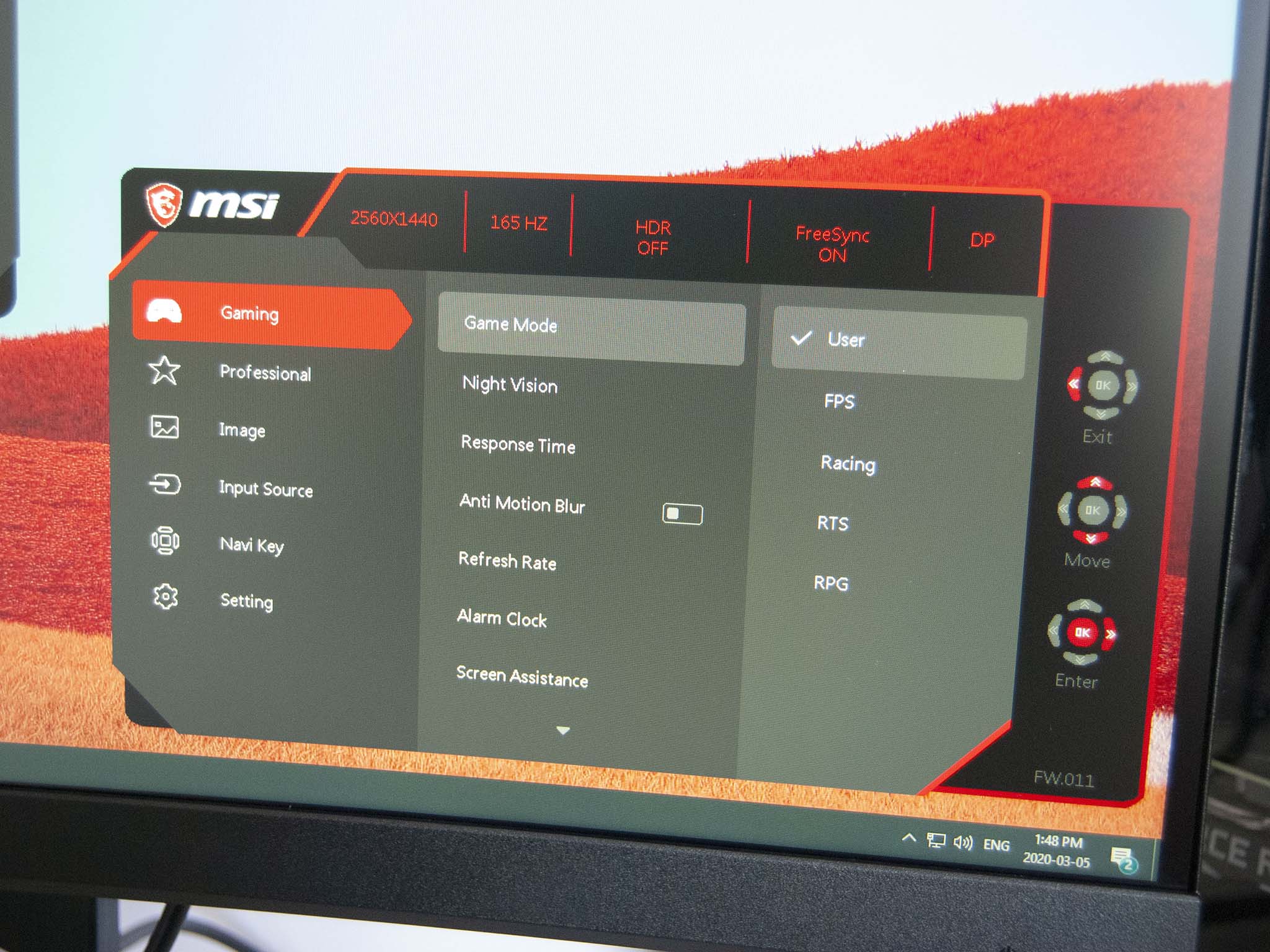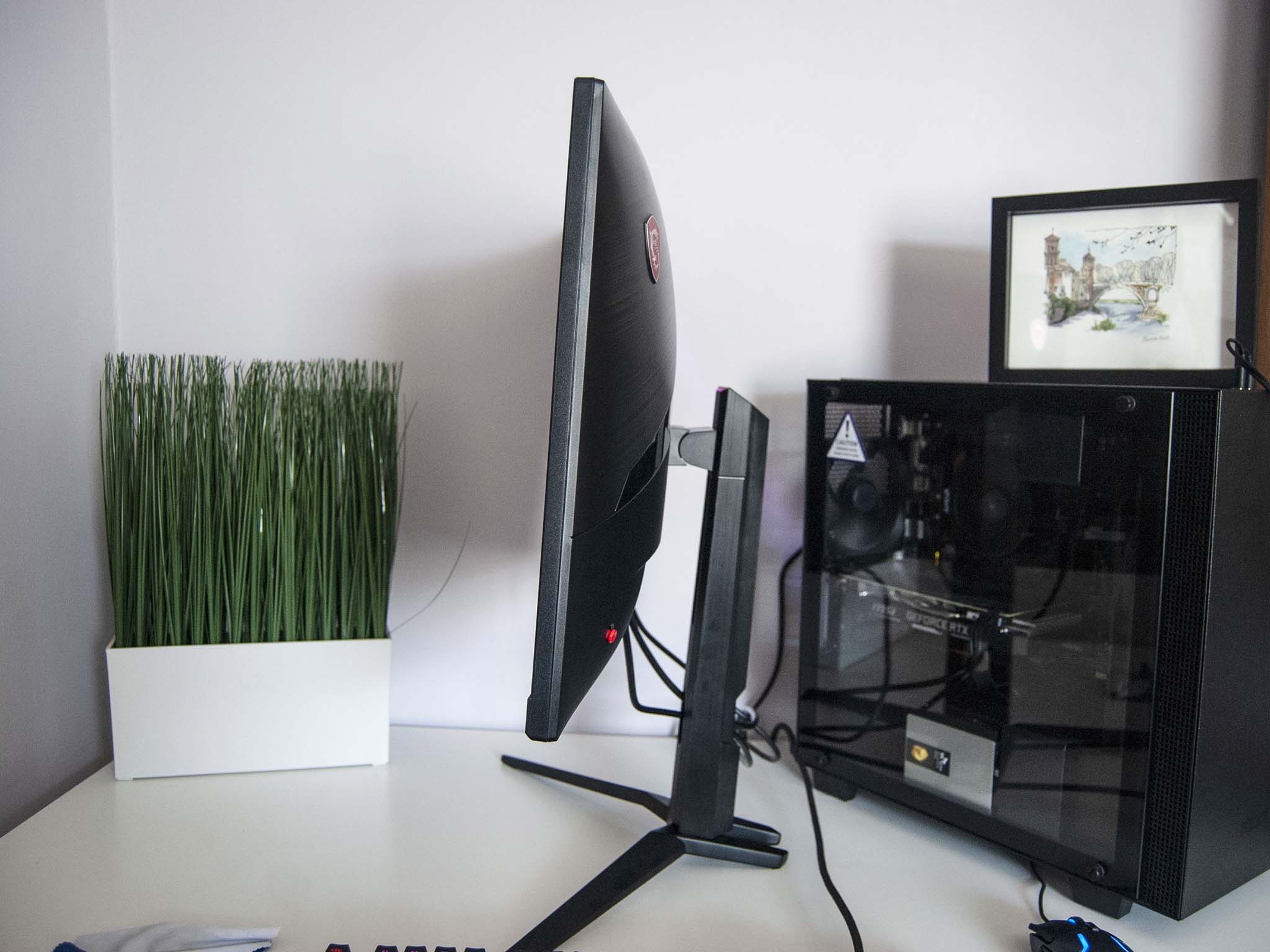
MSI's Optix lineup of gaming monitors has been padded with the 27-inch MAG272CQR, a FreeSync-enabled 1440p display with high refresh rate, low response time, and 1500R curve for increased immersion. It's certainly a fine display, but in a market this saturated, does it stand out? I've been using the MAG272CQR for a couple weeks as my primary gaming monitor to see what it's all about and, ultimately, whether or not it's worth a buy.

Bottom line: "HDR Ready" might be a misnomer, but the MSI Optix MAG272CQR is a 1440p monitor almost all gamers can appreciate thanks to high refresh rate, low response time, and lively color and contrast. The VA panel does suffer from a bit of ghosting, but not enough to drag down the overall appeal here.
Pros
- Boosted 165Hz refresh rate
- AMD FreeSync compatibility
- Superb color and contrast
- Generous ports, including USB-C
- High build quality with RGB lighting
Cons
- Not actually an HDR display
- VA panel shows some ghosting
What I love about the MSI Optix MAG272CQR
While 1080p (FHD) monitors are still being sold by the truckload to gamers who want the absolute best framerates possible from their hardware, 1440p (QHD) monitors like the are coming on fast, especially in the esports scene. The best graphics cards (GPU) are more capable than ever, and if you have at least a mid-range card from AMD or NVIDIA, chances are you can comfortably game on something like MSI's Optix MAG272CQR.
| Category | Spec |
|---|---|
| Size | 27 inches |
| Resolution | 2560x1440 (QHD) |
| Panel type | VA, LCD Matte |
| Curvature | 1500R |
| Aspect ratio | 16:9 |
| Refresh rate | 165Hz |
| Response time | 1ms |
| Contrast | 3,000:1 |
| Colors | 1.07 billion 10-bit |
| Brightness | Approx. 300 nits |
| Ports | USB-C USB-B (Up) Two USB-A 3.2 (Down) Two HDMI 2.0 DisplayPort 1.2 3.5mm audio |
| Free-Sync | Yes |
This 27-inch, 1440p monitor has a slight curve graded at 1500R, which is about as much as you want at this size. Coming from a flat panel it might take some getting used to, but you'll stop noticing anything out of the ordinary after just a few games. It's easier to glance to the edges of the display, and you kind of feel sucked into the action when things get frenetic. The case isn't too bulky and bezel is slim for a premium look.
It all sits on a metal three-point base with a plastic upright portion. This leaves lots of space on your desk compared to a flat, square base, but it's not as easy to stack atop a riser for a better viewing angle. Luckily, the upright portion allows for height adjustments, and it goes high enough where I can look straight on without bending my neck. There's no adjustment for left and right swivel, and you can't rotate the display around for portrait mode (makes sense due to the curve). There is the ability to tilt forward and back. It's a sturdy base if a bit limited in its ergonomics. Included in the box are screws for a VESA mount.
On the back of the case is a row of RGB lighting, customizable through the MSI Gaming OSD software. There are a bunch of presets to choose from, and you can sync up the lighting with other compatible products, like a keyboard and mouse. Primary control over the monitor's UI settings is handled by a single joystick, but there's also a quick-access button on the lower left edge of the display that immediately opens the Gaming OSD app. It's a more elegant way to adjust the picture and doesn't require the joystick, though it's going to pop you out of a game unlike the regular UI interface.



Straight out of the box, the picture is impressive from the Samsung-supplied VA panel. If you're looking for something that doesn't need any tweaking to satisfy, the Optix MAG272CQR will make a great option. I played for a couple of days with factory settings and enjoyed the deep color and contrast. Eventually testing with a DataColor Spyder 5 colorimeter, I got back 100% sRGB and 85% AdobeRGB color. I wasn't able to directly test, but DCI-P3 gamut reproduction should hover somewhere around the 90% mark. You probably don't want to buy this monitor for professional work, but for gaming and casual use the picture is more than adequate.
MSI's Optix MAG272CQR offers an impressive picture with lively color and contrast straight out of the box.
Instead of the common 144Hz refresh rate, this monitor ups it to 165Hz (when using DisplayPort) for an even smoother picture. Combined with an advertised 1ms response time, these are some quality specs that make gaming a pleasure, especially for first-person shooters and racing sims with frantic action. This is a FreeSync monitor and does not natively support G-Sync, but I had no issues using a NVIDIA RTX 2060 GPU. The NVIDIA Control Panel allowed me to enable G-Sync manually, and I noticed no screen tearing during my time with the monitor.
All the latest news, reviews, and guides for Windows and Xbox diehards.
There are some standard image tweaks available in the menu, allowing you to change the response time, enable night vision, and toggle an anti motion blur feature. These do interact with other features; for example, enabling motion blur reduction will impact FreeSync and response time. If you like sticking with recommended settings, there are multiple picture presets based on the type of game you're playing.
What I dislike about the MSI Optix MAG272CQR




Whereas a lot of gaming displays employ a TN panel to achieve better response time (at the cost of contrast and color accuracy), MSI uses a Samsung VA panel that's sort of a middle ground between IPS and TN. Its color and contrast are satisfying right out of the box, but it isn't perfect. VA panels are more prone to ghosting and that issue is found here despite the advertised 1ms response time.. It's really only apparent when displaying a dark background, and I noticed when performing ghosting tests at 165Hz, much less so I was actually gaming. Most gamers aren't going to find this to be an issue, but if any ghosting is irksome, you might want to look elsewhere.
The MSI Optix MAG272CQR includes "HDR Ready" in its marketing, but marketing is about all it's worth. True, it will recognize HDR content and you can hit the toggle switch in Windows settings, but you probably won't want to. I never did get the "HDR" picture looking anything other than blown out and fuzzy. It also maxes out at about 300 nits brightness, which doesn't meet the criteria for even HDR400. If you're shopping for an HDR monitor, this isn't it. In general, 300 nits doesn't seem particularly high, but the matte finish on the display helped eliminate glare. Even gaming with a sunny window at my back, I was able to get a clear picture.
Should you buy MSI's Optix MAG272CQR?
MSI's Optix MAG272CQR isn't perfect. The VA panel suffers from some ghosting and the "HDR support" is mostly an ugly affair, but these cons are easily outweighed by the pros. The overall 1440p picture is beautiful right out of the box, and only gets better with a bit of tweaking. With a slight curve it's easier to get pulled into the action, and the native FreeSync support (as well as non-native G-Sync support) eliminates screen tearing. The optional MSI Gaming OSD app is more convenient to use than the joystick, and it has its own hotkey on the display. It's all built into an attractive chassis with a sturdy stand and customizable RGB lighting. Looking to the future, it even has a USB-C port along with several USB-A.
So, should you buy this monitor? If you can live with a bit of ghosting and don't actually want true HDR support, the Optix MAG272CQR is a winner for just about any gamer. The QHD resolution is a big step up from 1080p, but make sure your hardware can handle it — no sense buying a monitor your PC can't max out. Likewise, if you're looking for a display for professional work, you're better off with something specialized.
It's priced in line with a lot of the competition, and its high refresh rate and low response time make it cut out for competitive play. It's built to a high standard, and it's entirely comfortable acting as the centerpiece to your gaming setup.
PC Gaming
Main
- Best PC Games of 2020
- Best PC Gaming Mice in 2020
- Best PC Gaming Keyboards in 2020
- Best Gaming Laptops in 2020
- 12 Essential PC Accessories Under $30

Cale Hunt brings to Windows Central more than nine years of experience writing about laptops, PCs, accessories, games, and beyond. If it runs Windows or in some way complements the hardware, there’s a good chance he knows about it, has written about it, or is already busy testing it.



